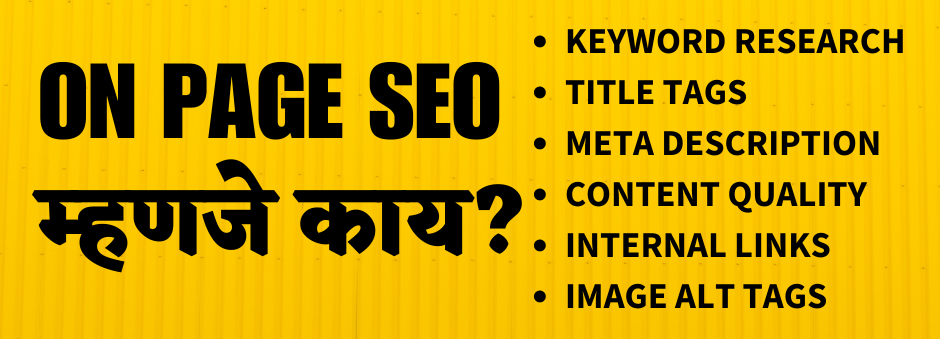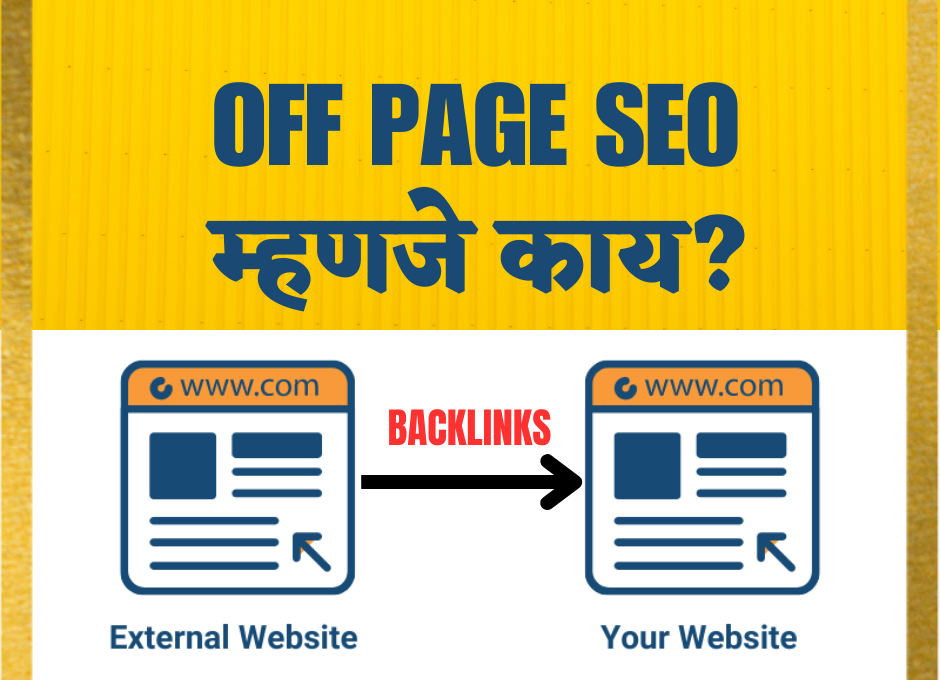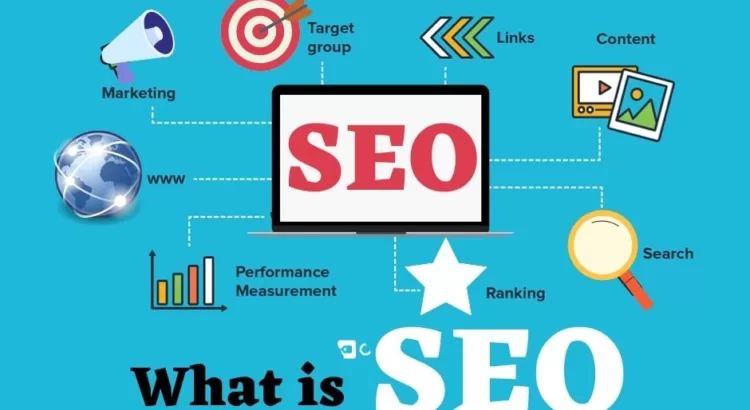Introduction:
SEO (Search Engine Optimization) is an important component of any digital marketing strategy. In today’s digital age, having an online presence is crucial for any business or individual. But how do you ensure that your website stands out in the vast sea of the internet? This is where Search Engine Optimization (SEO) comes into play. In this beginner-friendly guide, we’ll unravel the complexities of SEO in simple, easy-to-understand language, helping you lay the foundation for a website that ranks high on Google and other search engines.
Table of Contents
What is SEO ?
SEO is like a map that guides search engines through the labyrinth of the internet. It’s about making your website attractive to search engines like Google, so they’ll display it when someone searches for relevant terms. If your website doesn’t appear on the first page of search results, chances are, it won’t get much attention.
How is SEO different from SEM?
First of all we will learn about SEM.
SEM stands for Search Engine Marketing – or, it is most commonly known as, Search Marketing.
Search Engine marketing (SEM) is a type of digital marketing. It is term for the combination of SEO and PPC activities meant to get traffic via organic search and paid search.
In simple words, Search Marketing is the process of gaining traffic and visibility from search engines through both paid and unpaid methods.
So how do SEO and SEM differ? Technically they aren’t different – SEO is simply one-half of SEM:
- SEO = driving organic traffic from search engines.
- SEM = driving both organic and paid traffic from search engines.
Now, this is where things get a bit confusing.
Today, many people use SEM interchangeably with PPC.
This concept appears to undermine SEO. But just like PPC, SEO is a form of marketing.
Here’s the best way to think about SEO and SEM:
Imagine SEM is a coin. SEO is one side of that coin. PPC is on the another side.
How is SEO different from PPC?
PPC, or pay-per-click, is a form of online advertising in which advertisers get paid each time one of their adverts is clicked.
In basic terms, advertisers place bids on particular terms or phrases for which they want their advertising to show up in search engine results. The advertiser’s ad will show up among the top results when a user searches for one of those terms or phrases.
The phrases SEM and PPC are interchangeable in the industry, as we previously indicated. That’s not the case, though, on Search Engine Land.
Every time we use the term “SEM,” we’re referring to both organic and paid search (SEO and PPC).
Why is SEO important?
In today’s digital age, most people use search engines to find the information they need. With more than 3.5 billion searches per day, search engines like Google have become a major source of information. Unless your website is ranked on the first page of Google, people will not come to your website and you may lose potential customers and revenue, so you need SEO to rank your website well in Google. By optimizing your website and content in SEO, you can improve your website’s ranking and visibility in search engines, making it easier for potential customers to find you online.
An important marketing channel is SEO. First and foremost, 53% of all website traffic comes from organic search.
That is a significant factor in the estimated $122.11 billion worldwide SEO market by 2028. For brands, corporations, and organisations of all sizes, SEO produces tangible commercial results.
Every time a person wants to do something, go somewhere, learn something, gather data, do research, or purchase a good or service, their journey usually starts with a search.
However, search is highly dispersed today. Users can conduct searches on social media platforms like YouTube and TikTok, classic web search engines like Google and Microsoft Bing, or shop websites like Amazon.
Every year, trillions of searches are made. Being “search engine friendly” on any platform where people can search for your brand or business is crucial because search is frequently the main source of traffic for websites.
All of this indicates that increasing your exposure and placing ahead of your competition in search results might have a favourable effect on your bottom line.
The fact that PPC advertisements and other search elements are abundant on the search engine results pages, or SERPs, makes SEO even more crucial.
The traffic you require to meet important business objectives (such as conversions, visits, and sales) is driven by SEO. Additionally, it fosters trust because highly ranked websites are often seen as reliable or authoritative, both of which Google values and rewards with higher rankings.
Keywords and Their Role in SEO
Keywords are the magic words that connect searchers with your website. Research keywords related to your content using tools like Google Keyword Planner. Include these keywords naturally in your content to help search engines understand what your page is about.
On-Page SEO: Optimizing Your Content

On-page SEO involves tweaking what’s on your website to make it more appealing to search engines. Use relevant keywords in your titles, headings, and content. But remember, it’s not just about search engines – your content should be valuable to human readers too.
On Page SEO stands for “On Site Optimization”. Any changes we make on our website to get our website ranked on Google is called On-Site SEO.
Some elements of on-page SEO that can help your website rank:
Keyword research and usage: Keyword research is the process of identifying and analyzing keywords that people use to find information on search engines like Google. You can use tools like Google Keyword Planner or ahrefs to find keywords.
Content Quality: Content is the main part of your post. The more unique, informative quality information you provide, the faster your ranking will rise. Use keywords strategically and avoid keyword stuffing, which can harm your website’s ranking.
Title tag : The title tag should be attractive, so that it can attract the readers. As per my knowledge main keyword should be used in Title Tag.
Meta Description: Meta Description should be Easy and Simple. After reading this, the audience should have an idea of what is written in your article.
Image Alt tag: The Alt tag used in images tells Google what the image is about. So every image used in the post should use Alt Tag.
Internal links: Adding a link to another post of that blog in any post of your blog means doing internal linking.
URL Optimization: Main keyword should be used in your URL.
Off-Page SEO: Building Your Website’s Reputation

Imagine your website is a party, and other websites linking to yours are like people vouching for you. These links, known as backlinks, tell search engines that your site is credible. Focus on getting quality backlinks from reputable websites in your industry.
Technical SEO: Behind-the-Scenes Optimization
Technical SEO deals with the nitty-gritty stuff that affects how search engines crawl and index your site. Make sure your website loads quickly, is mobile-friendly, and has a sitemap that helps search engines find all your pages.
User Experience (UX) and Its Impact on SEO
Search engines want to send users to websites that offer a great experience. Ensure your website is easy to navigate, loads fast, and looks good on all devices. User experience matters – a satisfied visitor is more likely to become a loyal customer.
Content Quality: The Heart of SEO
Content is king in the kingdom of SEO. Regularly publish high-quality, informative, and engaging content that resonates with your audience. The longer visitors stay on your site reading, the better it is for your SEO.
Local SEO: Getting Found Locally
Local SEO is crucial for businesses with a physical presence. Optimize your Google My Business listing, encourage reviews, and include local keywords to help people find you when they’re searching in your area.
Measuring Success: Analytics and Monitoring
You wouldn’t drive blindfolded, right? Similarly, you need data to steer your SEO efforts. Set up Google Analytics to track your website’s performance. Monitor metrics like organic traffic, bounce rate, and top-performing keywords.
Conclusion
SEO might seem complex, but it’s like tending to a garden – a little care, patience, and understanding go a long way. By implementing the strategies outlined in this guide and embracing SEO as an ongoing process, you’ll be well on your way to dominating the search engine results and getting your website the attention it truly deserves.
FAQs About SEO
Is SEO a one-time thing?
Nope, SEO requires ongoing efforts. Algorithms change, and your competitors won’t be sitting idle.
Can I trick search engines with fake keywords?
Don’t even try. Search engines are smart and penalize websites for keyword stuffing.
How long does it take to see results?
SEO is a marathon, not a sprint. It can take a few months to see significant changes.
Do I need to hire an expert?
It depends on your knowledge and time. You can learn and do it yourself, or hire a professional for quicker results.
What’s the biggest SEO mistake?
Neglecting the user experience. Prioritize your visitors over search engines.
What are the 4 types of SEO? What are main types of SEO?
1) On Page SEO 2) Off Page SEO 3) Local SEO 4) Technical SEO




